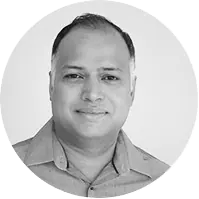I. INTRODUCTION
A. BRIEF OVERVIEW OF NO-SCALPEL VASECTOMY (NSV)
A vasectomy is a form of male birth control and permanent contraception. Your urologist will cut, seal, or tie your vas deferens (sperm ducts) during the procedure to prevent sperms from mixing with your semen. Hence, you will become sterile or infertile – you cannot make your partner pregnant.
A no-scalpel vasectomy (NSV) is a minimally-invasive procedure that produces fewer complications and side effects than a traditional vasectomy.
In fact, the Cochrane Database System Review published a study in March 2014 that stated, “The no-scalpel approach to the vas resulted in less bleeding, hematoma, infection, and pain as well as a shorter operation time than the traditional incision technique.”
As the term no-scalpel vasectomy suggests, the process doesn’t involve the use of a scalpel In a traditional vasectomy, the doctor used a scalpel to make two small incisions in the scrotal region. He finished off the procedure by stitching the incisions and placing a medical gauze on them.
This isn’t the case with a no-scalpel vasectomy. He will isolate your sperm duct and then expose it above your scrotal skin area with a special skin dissector. Your physician will cauterise and seal the end of the sperm duct to prevent sperm from mixing with your semen.
In this day and age, a no-scalpel vasectomy is a relatively quick, painless, and effective procedure that has helped thousands of Australian men achieve their family planning goals every year.
B. IMPORTANCE OF ADEQUATE PREPARATION
A successful no-scalpel vasectomy procedure depends on adequate preparation. Not only do many medical experts consider it a permanent form of male birth control, but it’s also something men experience just once in their lives.
With that in mind, many males don’t know what to expect prior to their NSV procedure. Horror stories of other men experiencing horrific side effects from a traditional vasectomy (such as haematoma or bleeding) could have these testosterone-driven blokes quaking in their boots!
You don’t have to act like a bundle of nerves before you undergo a no-scalpel vasectomy. Mental preparation is half the battle won.
Know that thousands of men have experienced a successful NSV procedure in the past. Encourage yourself you will join their ranks after a relatively quick 20- to 30-minute procedure. That kind of mindset will help your nerves go down and take the edge off.
In terms of physical preparation, your physician will ask you to do several things such as avoiding aspirin (it might induce bleeding), refraining from strenuous exercises, and shaving pubic hair in your scrotal region before your NSV procedure. Patients cannot understate their importance – taking these steps will facilitate your no-scalpel vasectomy procedure and ensure its success.
II. UNDERSTANDING NO-SCALPEL VASECTOMY
A. BASICS OF NSV PROCEDURE
Your urologist will start the no-scalpel vasectomy (NSV) process by numbing your scrotum with anaesthesia.
Nowadays, many physicians use a no-needle, high-pressure jet injector to anaesthetise the scrotal area of their patients. Males who underwent local anaesthesia with a needle typically reported it was the most uncomfortable part of their no-scalpel vasectomy. Studies have proven a no-needle jet anaesthesia has satisfied male patients for many years.
Your urologist will isolate your sperm duct using a three-finger technique. Next, he will use a no-scalpel ring forceps to keep your vas deferens in place underneath your skin. Your physician will do this without compromising the blood vessels in your scrotal region.
Your doctor will now perform the so-called “supination manoeuvre” – he will remove the fascial covering surrounding your sperm duct with a no-needle dissector. Consequently, he has made a superficial puncture and exposed your sperm ducts.
The urologist will cauterise and seal the ends of your sperm ducts. He will place a gauze on the affected area to finish off the process. In contrast to a traditional vasectomy, an NSV procedure doesn’t require the use of stitches. The superficial puncture will heal on its own.
B. BENEFITS OF CHOOSING NO-SCALPEL VASECTOMY
Here are some of the benefits of choosing a no-scalpel (NSV) vasectomy:
- Minimally-invasive: Modern NSV procedures use minimally-invasive techniques such as no-needle jet sprays for anaesthesia.
- Quick outpatient procedure: Most no-scalpel vasectomies typically take 20 to 30 minutes to complete.
- No stitches required: The small puncture in your scrotal region doesn’t require stitches during a no-scalpel vasectomy. You don’t have to ask your physician to remove them in your next visit.
- Shorter recovery time: The minimally-invasive nature of NSV procedures results in shorter recovery time. Most male patients resume their normal daily activities just 48 hours after undergoing a no-scalpel vasectomy.
- Affordable: Most no-scalpel vasectomies in Australia typically cost in the $700 to $800 range. If you’re an Australian citizen or permanent resident, your Medicare health coverage slashes that cost by an average of $200.
C. DISPELLING COMMON MYTHS AND MISCONCEPTIONS
Here are some common myths and misconceptions about no-scalpel vasectomies (NSV):
Unbearable pain: The thought of your doctor working on your genital region may seem like pure agony to some males. You can put those fears to rest once and for all.
Many patients say getting injected with a local anaesthesia was the most uncomfortable part of a no-scalpel vasectomy. It was smooth sailing from that point onward. If your doctor will use a needle-free jet spray for your anaesthesia, the entire procedure is virtually painless.
Adverse effects on sex drive/libido: Some males fear undergoing an NSV procedure will negatively affect their libidos. This isn’t true.
In fact, it’s the other way around. The Journal of Urology April 2015 issue concluded women who had vasectomised partners had a 46 percent higher chance of having sexual intercourse once a week compared to women whose partners weren’t sterile. Your sex life will actually improve after your procedure.
Immediate effects: Some males mistakenly think they can already say goodbye to alternative forms of birth control just several days after their NSV procedure. Don’t fall into this trap!
Your urologist will typically allow you to engage in sexual intercourse one week after your no-scalpel vasectomy. However, you must use birth control methods such as latex condoms. It takes approximately 10 to 20 ejaculations after your procedure before your semen shows little to no sperm count and activity. You can still make your partner pregnant several weeks after your NSV procedure.
As a precautionary measure, your physician will ask you to take a semen analysis eight to 12 weeks after your no-scalpel vasectomy. You will submit a semen sample which he will examine under a microscope. If he deems your semen shows no sperm content and motility (activity), he will allow you to become intimate with your partner without using other forms of contraception.
Lower testosterone levels: Castration involves removal of the male testicles. This isn’t the case with a vasectomy. Since your testicles will remain intact after an NSV procedure, your testosterone levels won’t diminish at all. Hence, you don’t need to fret about possible loss of facial hair or muscle mass.
Prostate cancer risk: A no-scalpel vasectomy will not increase your risk of developing prostate cancer. Studies have proven there is no link between a vasectomy and the disease.
Cardiovascular disease risk: Getting a no-scalpel vasectomy isn’t a risk for cardiovascular disease. A study published in the August 2017 issue of Medicine (Baltimore) concluded. “Our findings suggest that vasectomy is not associated with the excess risk of CVD incidence and mortality.”
Author Bio

Dr.Raj Selvarajan MBBS MRCS(Ed) MRCGP(UK) FRACGP MMed(UQ)
Scalpel Free Vasectomist,
Course Organiser – Advanced Workshop in No Scalpel Vasectomy (HealthCert)

